Pottery Courses
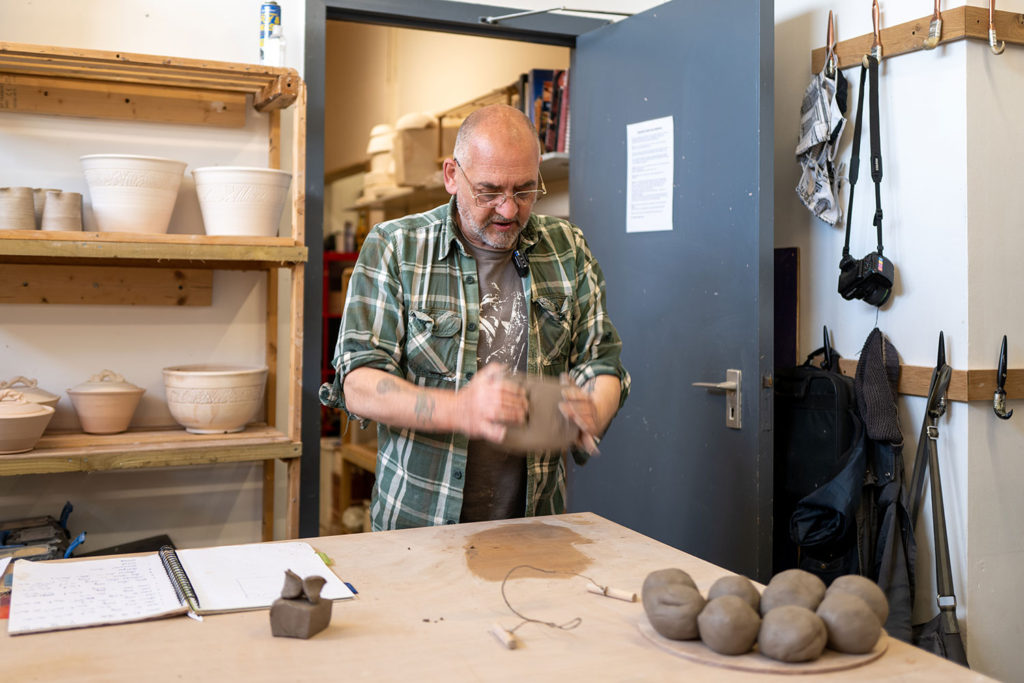
My name is Andy Lang (AKA the Potter of Leith) and I am the instructor of the courses at Leith Community Pottery.
I gained my Bachelor’s Degree in Ceramics in 1983 in Dundee. Since then, I have worked as a songwriter and in health & social care, but all this time, I never gave up teaching pottery.
In my classes, besides teaching the techniques of throwing on the wheel, I also aim to pass my passion for pottery on to my students.
About the Courses
Courses are either 9 weeks or 10 weeks in duration, 2.5 hours per week.
We use stoneware clay and electric wheels in the classes.
Class numbers are 6 maximum.
We also offer individual 1-2-1 Tuition (all levels of experience), Group Experiences and Children’s Activities by arrangement.
Taster Sessions are available too – visit the Gift Card section of our Shop.
Level of Instruction
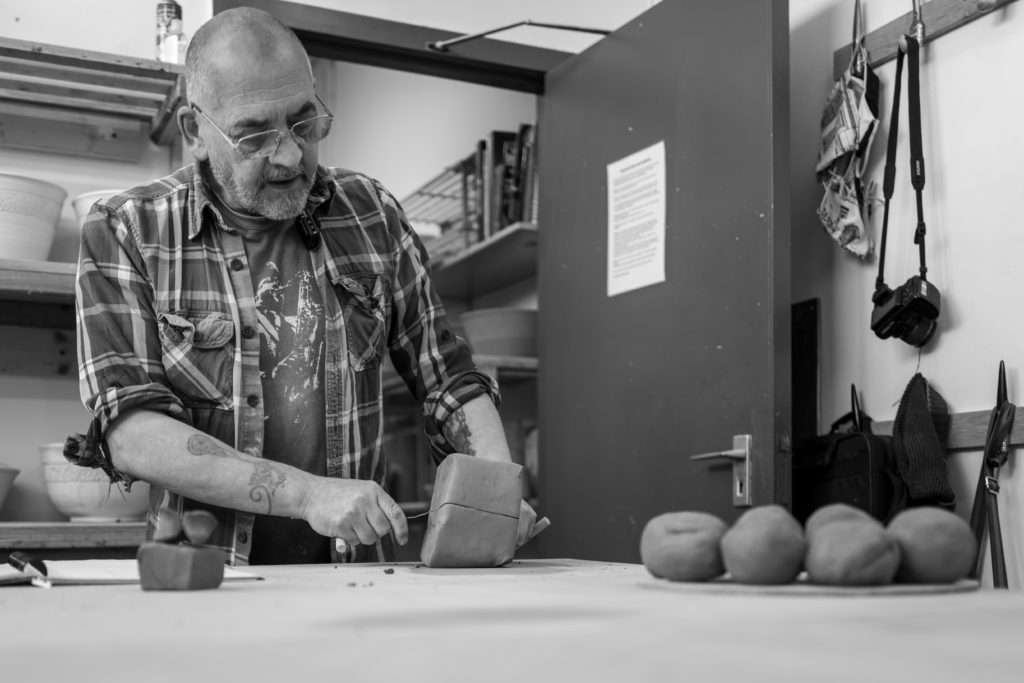
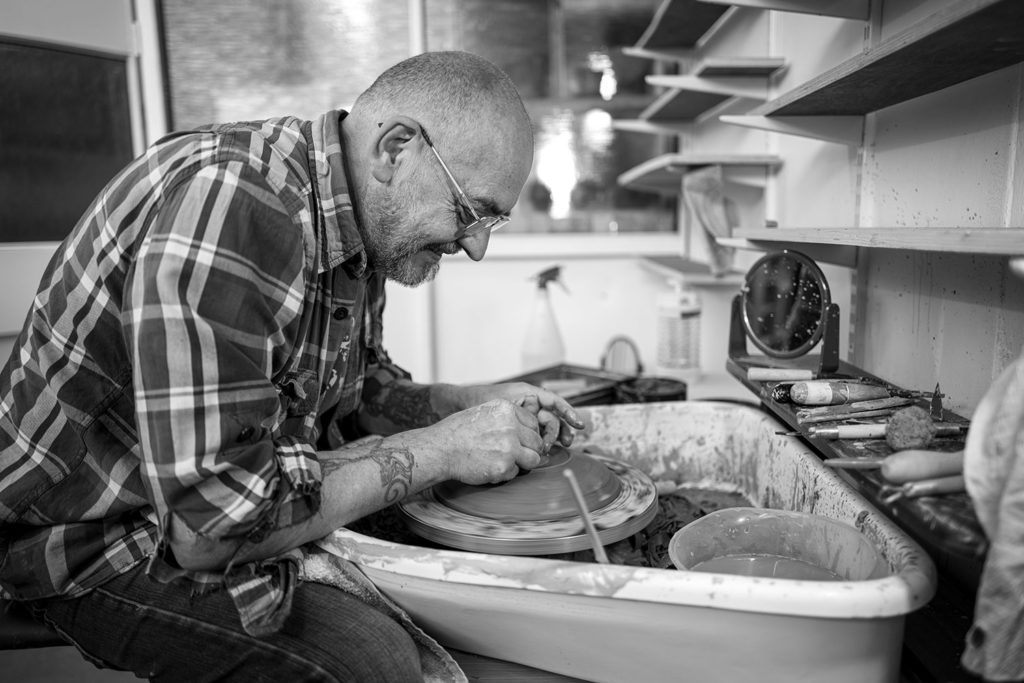
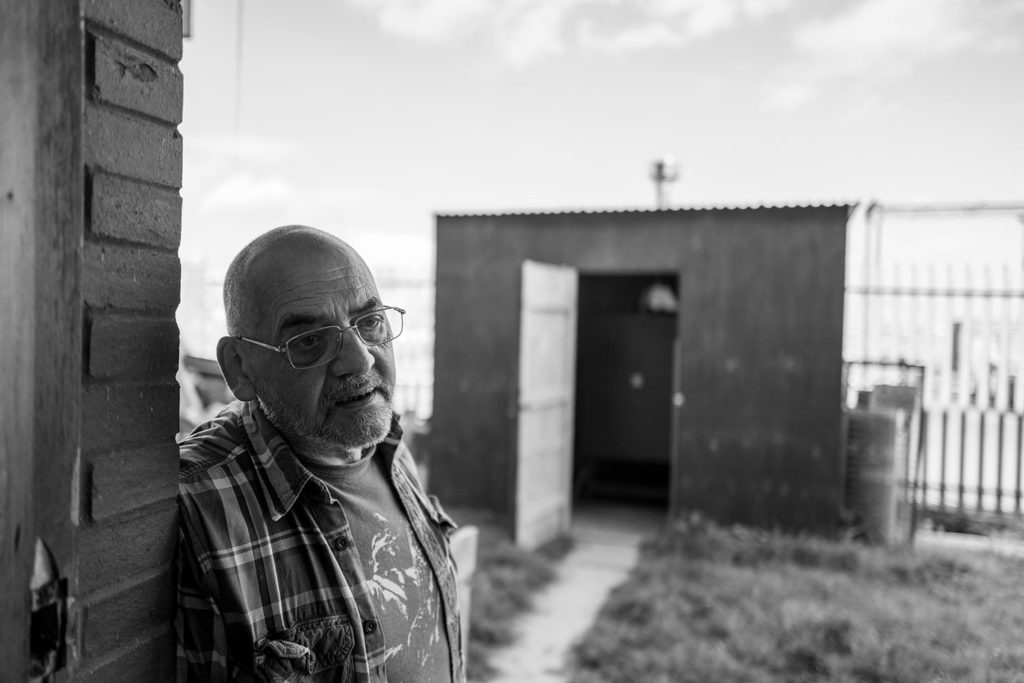
No matter your level of experience – whether you are a beginner or an improver, you are welcome at the classes. If you are new to pottery, you will learn the basic techniques of throwing on the wheel. If you are more experienced, you will be supported to develop and expand your knowledge.
You will receive individual attention throughout the classes based on your experience, along with group demonstrations of the techniques taught.
What You Will Learn
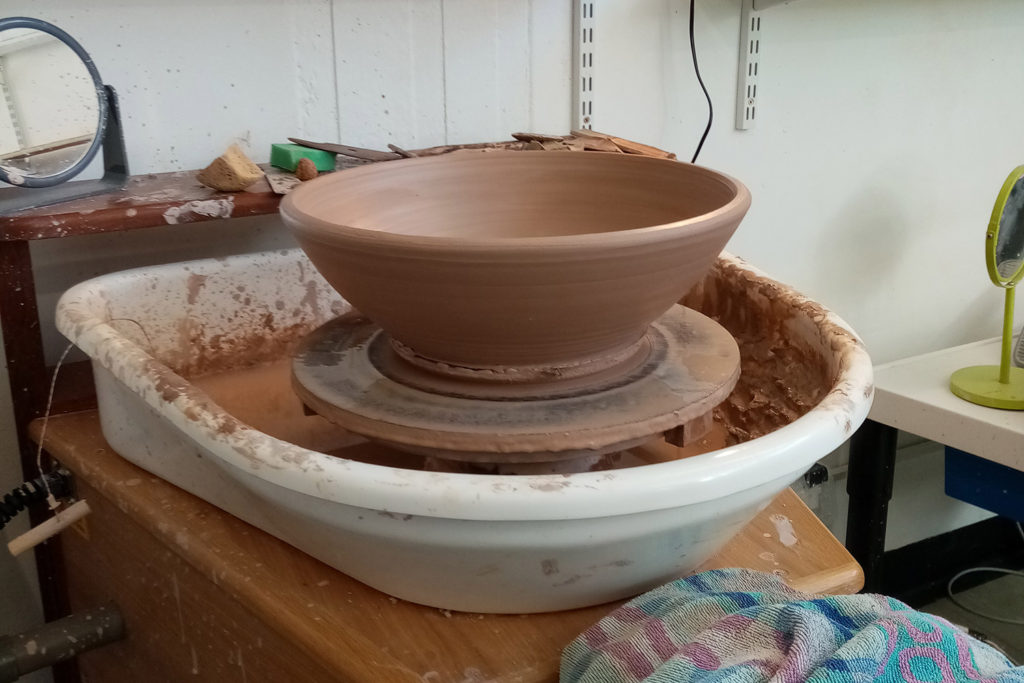
The foundations
We will begin by covering basic techniques such as preparing clay, centering and throwing cylinders, then progress to more sophisticated forms. You will also learn how to trim and turn pots, make lips, handles and other appendages.
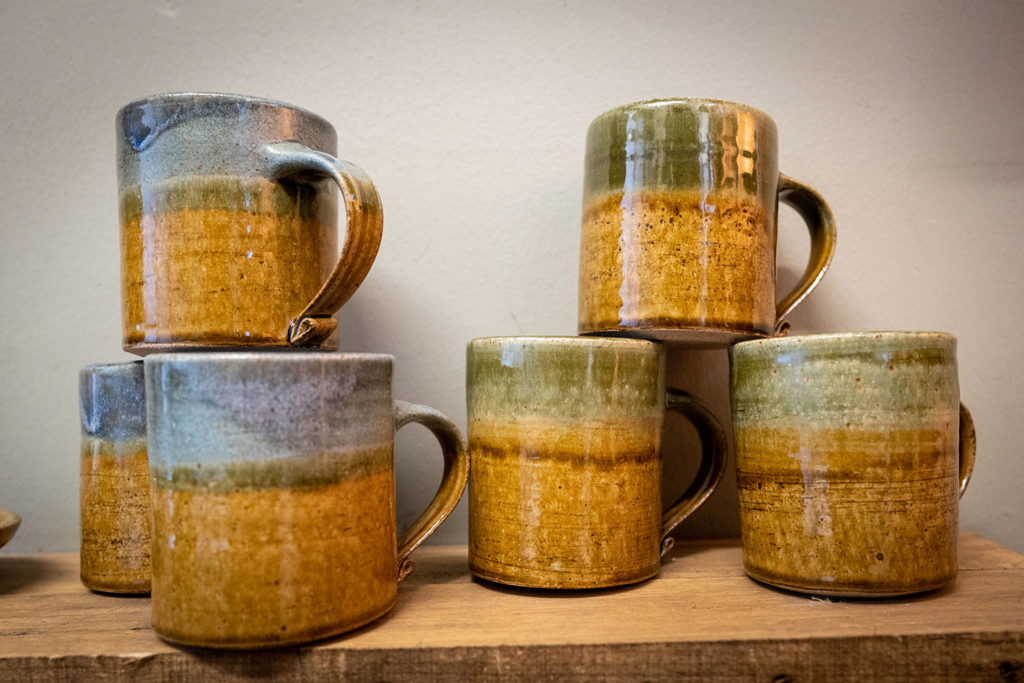
Finishing touches
Decoration is what brings a piece alive and makes it unique. Once you are confident with throwing on the wheel, you will learn a variety of decorating techniques including carving, engraving, applied decoration, piercing, slip decoration, wax resist and glazing to make your creations stand out.
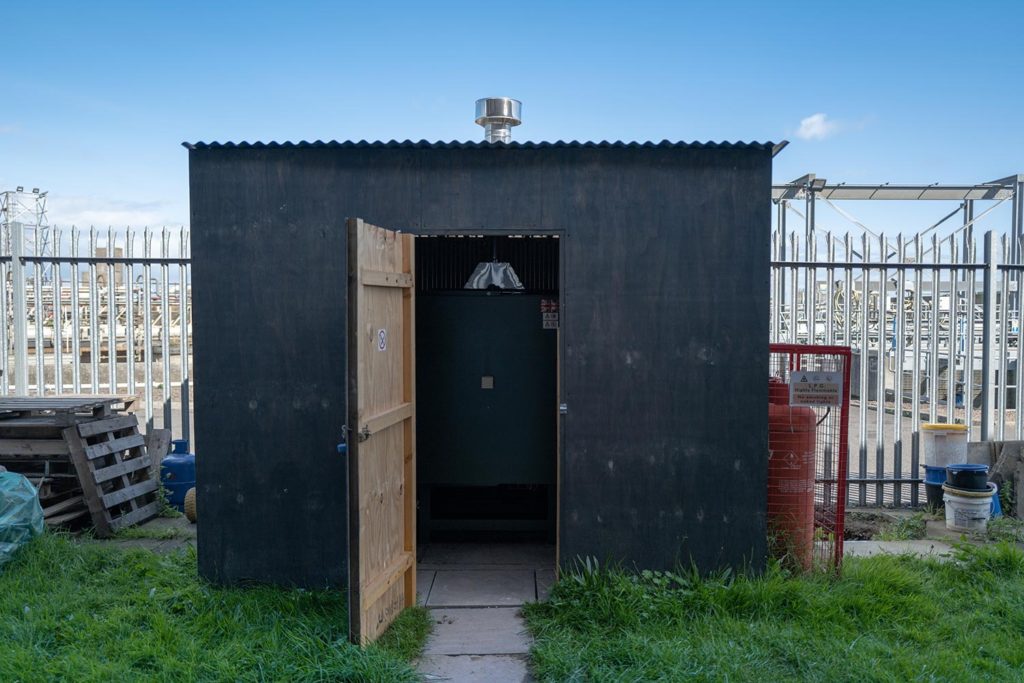
The science of pottery
We will also explore the physics and chemistry of ceramics.
But no need to worry if you didn’t excel in science at high school, we will only cover the basics.
There are no tests, and the courses are, at present, uncertificated.
Outcomes
By the end of the course, you will be able to center and throw clay on the potter’s wheel. If you are more experienced, you will have developed and expanded your skillset. Depending on your experience, this may include the making of lids, spouts, flatware, larger pieces and composite forms.
You will also have a good understanding of ceramic processes, design and functionality, along with a wee bit of historical and contextual knowledge.
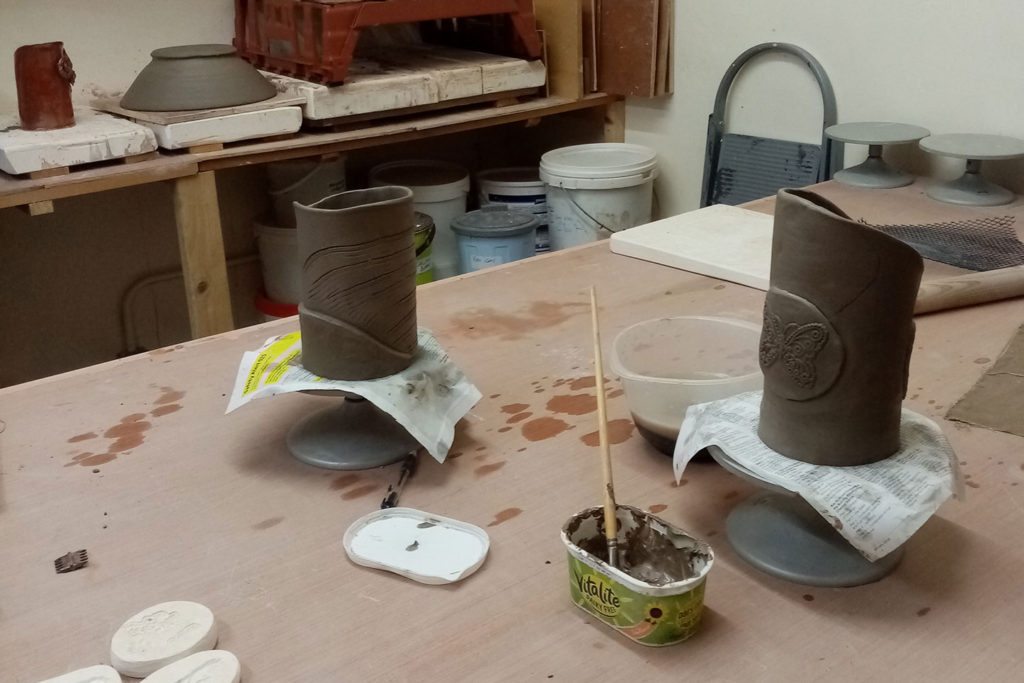
Finished Work

Nothing makes a better piece of gift or home decoration than a handmade item. At the end of the course, you will take home a considerable amount of finished, glazed and fired pieces. The ware is reduction fired to Cone 10 (around 1290 degrees centigrade) and is frost proof, oven proof, dishwasher proof and food safe, so you can even serve dinner to your guests in tableware made by yourself.


